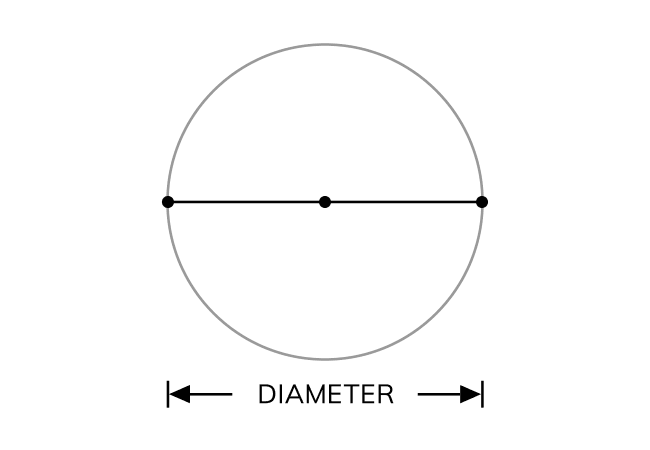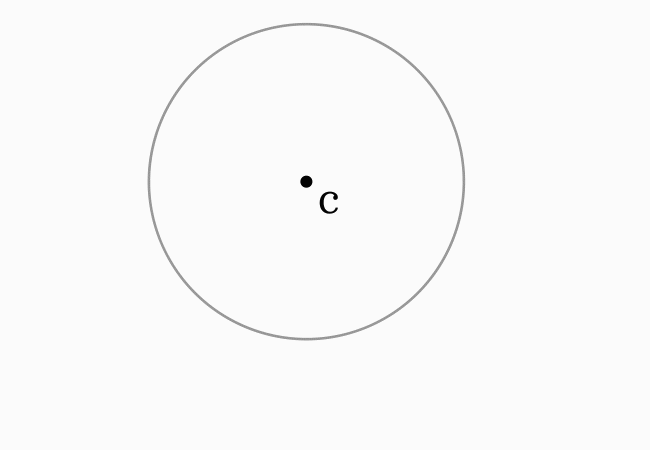The straight distance between two points on a circle through its center is called the diameter.
The diameter is the distance between any two opposite points on a circle but the opposite points are defined by considering the center (or centre) of a circle.

Hence, the diameter of a circle is measured from any point on a circle to its opposite point on the same circle through the centre (or center) of circle.
It is expressed graphically by a line segment between two opposite points through the center of a circle. It is usually denoted by an alphabet $d$ in geometric mathematics.
In a circle, the diameter is equal to two times the radius.
$Diameter \, (d)$ $\,=\,$ $2 \times Radius$
This geometrical relationship is used as a formula in geometry to find diameter from radius and vice versa.
Let $E$ be any point on the circle and $F$ be its reflection in the point of view of its center or centre ($C$).

Now, draw a straight line from point $E$ to $F$ through $C$. It forms a line segment $\overline{EF}$ and the length of that line segment is called the diameter.
$\implies$ $Diameter \,(d) \,=\, EF$
$\implies$ $Diameter \,(d) \,=\, EC+CF$
In this case, the distance between points $C$ and $E$ and also distance between points $C$ and $F$ is the radius of this circle.
$\,\,\,\therefore\,\,\,\,\,\,$ $d \,= \, 2 \times CF$ (or) $d \,= \, 2 \times CE$
A free math education service for students to learn every math concept easily, for teachers to teach mathematics understandably and for mathematicians to share their maths researching projects.
Copyright © 2012 - 2025 Math Doubts, All Rights Reserved